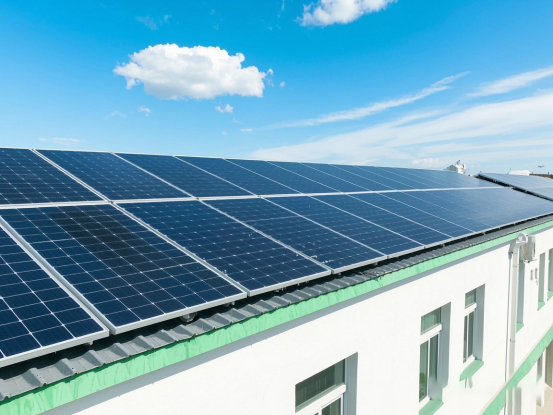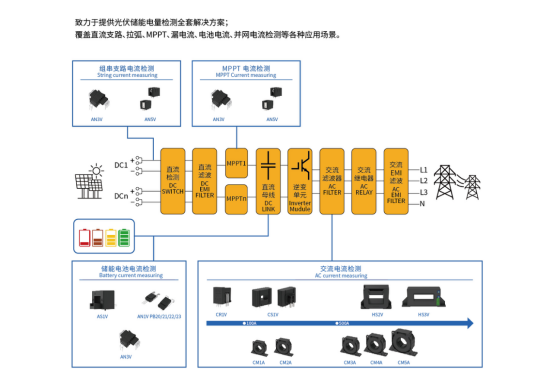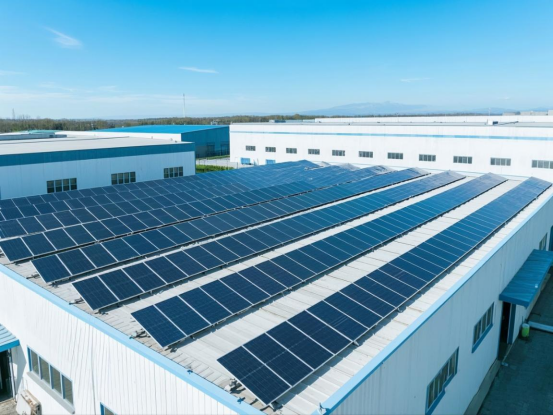
Under the current four-category regulatory framework for distributed photovoltaic, enterprises with rooftop areas not exceeding 1,000 square meters face multifaceted challenges including constrained grid-connection mode options, optimization barriers in rooftop resource utilization, and technical compliance requirements. By adopting current sensor technology, these businesses can enable refined operational management, enhance energy efficiency, and explore innovative operational models, thereby overcoming the limitations imposed by existing policies with current sensors. CHIPSENSE is one of them.

The Policy Constraints on Small-Rooftop Enterprises
Internet mode restrictions:
Small commercial & industrial (C&I) distributed PV systems are generally limited to either full self-consumption or self-consumption with surplus grid feed-in, requiring shared legal/ownership boundaries between generators and consumers. Large C&I systems are mandated to adopt full self-consumption mode with anti-back flow devices.
Rooftop Resource Constraints:
Aging buildings or structurally unsuitable rooftops either disqualify PV installations or force reduced install-able capacity, directly impacting generation capacity and revenue potential.
Technical Compliance Standards:
Systems must comply with the "observable, measurable, adjustable, controllable" (OMAC) framework and integrate with grid dispatching platforms, imposing elevated technical thresholds.
The current sensors from CHIPSENSE are according to standards.
Current Sensors: Solution
As the "nerve endings" of the photovoltaic system, the current sensor realizes functions such as precise fault location, efficiency optimization and safety control by monitoring the string current sensor in real time. CHIPSENSE make some effort in it.
1. Improve power generation efficiency: CHIPSENSE current sensor quickly locate faults and optimize component layout to make up for space shortages.
2. Intelligent operation and maintenance: CHIPSENSE current sensor will support remote monitoring, early warning and predictive maintenance, reducing labor costs.
3. Enhanced safety: Provide over-current protection, fire protection measures, and ensure accurate metering to comply with policy requirements.
4. Energy storage collaboration: dynamic load matching and participation in power market transactions, breaking through the limitations of roof area from CHIPSENSE.
5. Virtual power plant aggregation: Participate in the operation of virtual power plants through data collection to further expand revenue sources by CHIPSENSE.

Typical case study
A small and medium-sized enterprise installed and deployed alternative - CHIPSENSE current sensor combined with an energy storage system, which not only improved the power generation efficiency and the proportion of self-use, but also obtained additional compensation benefits by participating in the virtual power plant. The results show that the company's annual power generation has increased by 80,000 kWh, the overall revenue has increased by 20%, and the operation and maintenance costs have been reduced by 30%. CHIPSENSE current sensors played an important role in it.
Summary and recommendations
For enterprises with small rooftops, current sensors are not only a technical means to improve efficiency, but also a key to meeting policy challenges. It is recommended to give some priority to the application of domestic alternatives - high-precision current sensors of CHIPSENSE, which combined with intelligent operation and maintenance platforms and energy storage systems, and actively explore the virtual power plant model, so as to achieve efficient, safe and compliant operation of distributed photovoltaic projects and maximize their economic benefits within the framework of policy regulations. CHIPSENSE will provide some helps.
(Disclaimer: This article is based on publicly available information and is intended for information sharing. It does not constitute any investment or application advice. Please refer to the official documentation or consult a professional for specific product selection.)

CHIPSENSE is a national high-tech enterprise that focuses on the research and development, production, and application of high-end current and voltage sensors, as well as forward research on sensor chips and cutting-edge sensor technologies. CHIPSENSE is committed to providing customers with independently developed sensors, as well as diversified customized products and solutions.
“CHIPSENSE, sensing a better world!
www.chipsense.net
4F, Building C, ZHENGLING.Hi-TECH PARK(Core Space) , No. 2 Cuizhu 2nd Street, Xiangzhou District, Zhuhai, Guangdong Province, China
+86-756-8600806